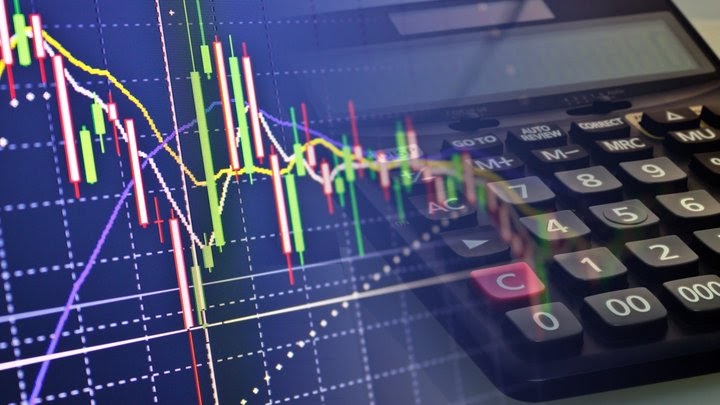Articles
How to Manage Your Money and Risks in Forex Trading
The key to managing risk in forex trading is setting stop losses. A stop loss is an order that closes your trade if the price moves against you by a certain number of pips. It limits your losses if the market suddenly turns against you.

How to Manage Your Money and Risks in
Forex Trading
So you’ve decided to dive into the exciting
world of forex trading. While the potential rewards of trading currency on the
foreign exchange market are huge, so are the risks. Before you start trading, you
need to develop a solid money and risk management strategy to avoid losing your
shirt. Managing your money and risks is arguably the most important aspect of
successful forex trading.
In this article, we’ll show you how to
establish a prudent money management plan, calculate how much you can afford to
risk on each trade, set stop losses to limit losses, and use leverage wisely.
We’ll also explore different risk management techniques and tools to help you
navigate an always volatile forex market. If you want to trade forex long-term
and actually make a profit, you must have strict money and risk management
disciplines in place. Follow these guidelines and you’ll be well on your way to
trading forex successfully.
Setting Stop Losses to Limit Risk
The key to managing risk in forex trading is
setting stop losses. A stop loss is an order that closes your trade if the
price moves against you by a certain number of pips. It limits your losses if
the market suddenly turns against you.
You have a few options for stop losses. A
fixed stop loss means closing your trade if it reaches a fixed number of pips
away from your entry price. For example, you buy EUR/USD at 1.2000 and set a 50
pip fixed stop loss. If the price drops to 1.1950, your trade is closed.
A trailing stop loss is more flexible. It
moves with the price as your trade becomes profitable. For example, you buy at
1.2000 and set a 50 pip trailing stop loss. If the price rises to 1.2050, your
stop loss moves up to 1.2000. If it continues up to 1.2100, your stop loss
moves to 1.2050. This locks in profits as the price moves in your favor.
A percentage stop loss closes the trade if it
drops a certain percentage of the high-low range for that currency pair. For
example, EUR/USD may have a daily range of 100 pips. A 10% stop loss would
close the trade if it drops 10 pips from the daily high. This adapts to the
market volatility.
Whichever method you choose, be sure to stick
to it. Move your stop loss to break even once your trade becomes profitable.
This ensures you lock in gains and the worst outcome is a small loss. Stop
losses are key to surviving the volatile forex market. Use them on every trade
to avoid risking too much of your capital on any single position.
Managing Your Money: Only Risk What
You Can Afford to Lose
The most important rule in forex trading is
to only risk money that you can afford to lose. Forex markets can be volatile,
and losses can exceed your deposits.
Start by setting a budget for your trading
capital. Only deposit an amount that would not impact your lifestyle if lost.
It's best to start small as you learn, even if you have more money to invest.
You can always add more capital once you've become experienced.
Never risk more than 1-2% of your account on
any single trade. Spread your risk over multiple trades to minimize losses. If
a trade goes against you, stay calm and stick to your strategy. Panic selling
often leads to greater losses.
Use stop loss orders to limit your risk. A
stop loss order automatically closes your trade if it reaches a maximum loss
amount. Place stop losses on all your trades before opening a position. Review
and adjust stop losses regularly based on the market and your strategy.
Consider using a demo account to practice.
Demo accounts use virtual money so you can get experience without risking your
capital. Trade on a demo account for at least 3-6 months before going live.
This allows you to learn how to analyze the market, test strategies, and get
familiar with trading platforms without pressure.
Diversify your portfolio. In addition to
forex, consider trading commodities, stocks, bonds, and other markets.
Diversification reduces risk since losses in one market may be offset by gains
in another. You can also trade forex pairs that tend to move in opposite
directions, like EUR/USD and USD/JPY.
Follow these essential rules for managing
your money and you'll be able to trade forex for the long run. Keep your risk
low, use stop losses, start small, practice patience, and diversify. If you
take it slow and steady, forex trading can be a rewarding endeavor.
Find the Right Prop Firm for You
Once you’ve decided to trade forex, the next
step is finding the right prop firm for you. A prop firm provides the platform,
tools, and resources for forex traders to conduct trades. But with so many
options out there, how do you choose?
Consider the Fees
Different prop firms charge different fees
for their services. Some charge higher commissions per trade, others charge
monthly or annual membership fees. Compare the fee structures of different
firms to find one that fits your budget. Lower fees are always better,
especially when you’re first getting started.
Look at the Leverage Offered
Leverage allows you to control large amounts
of money using very little of your own funds. Most prop firms offer leverage
levels from 1:50 to 1:400. Higher leverage means higher risk, but also higher
reward potential. Choose a firm that offers leverage suitable for your risk
tolerance and trading experience.
Consider the Additional Resources
The best prop firms provide resources to help
traders learn and improve. Look for a firm that offers resources like:
•Educational content - Courses, video
tutorials, blogs, webinars, etc.
•Expert support - Access to experienced
traders who can answer questions.
•Trading tools - Advanced charting features,
trading signals, algorithmic trading, etc.
•Community - Forums where you can connect
with and learn from other traders.
Choosing the right prop firm is key to your success as a forex trader. Do your research, compare different firms, and find one that suits your needs and will set you up for success in the exciting world of forex trading. With the right prop firm behind you, you'll be trading currencies in no time!
Conclusion
And that's the lowdown on managing your money
and risks as a forex trader. There's no getting around it, forex trading can be
risky business. But by establishing a solid trading plan, setting stop losses,
only risking what you can afford to lose, and keeping your emotions in check,
you'll give yourself the best shot at trading success. Remember, don't get
greedy, be willing to accept small losses, and protect those profits once you
have them. If you follow these guidelines, make wise decisions, and keep
practicing your craft, you'll be well on your way to becoming a forex trading
pro. Now get out there and trade smart! The markets are waiting.


